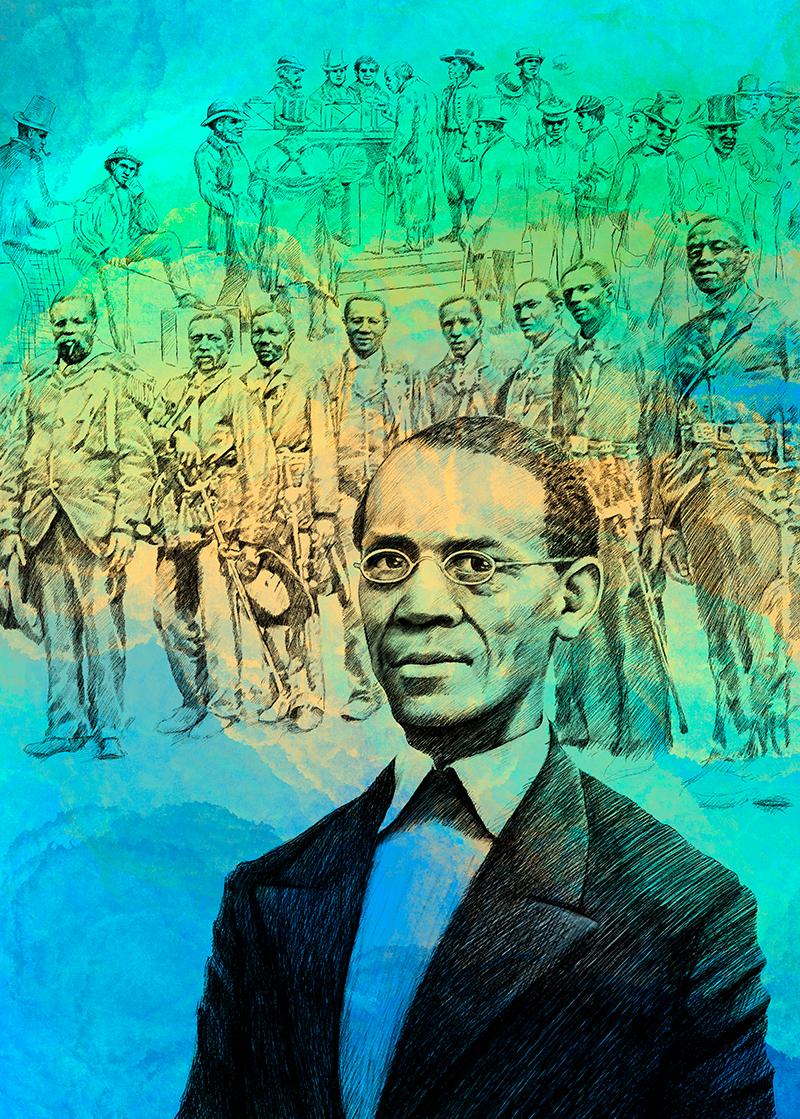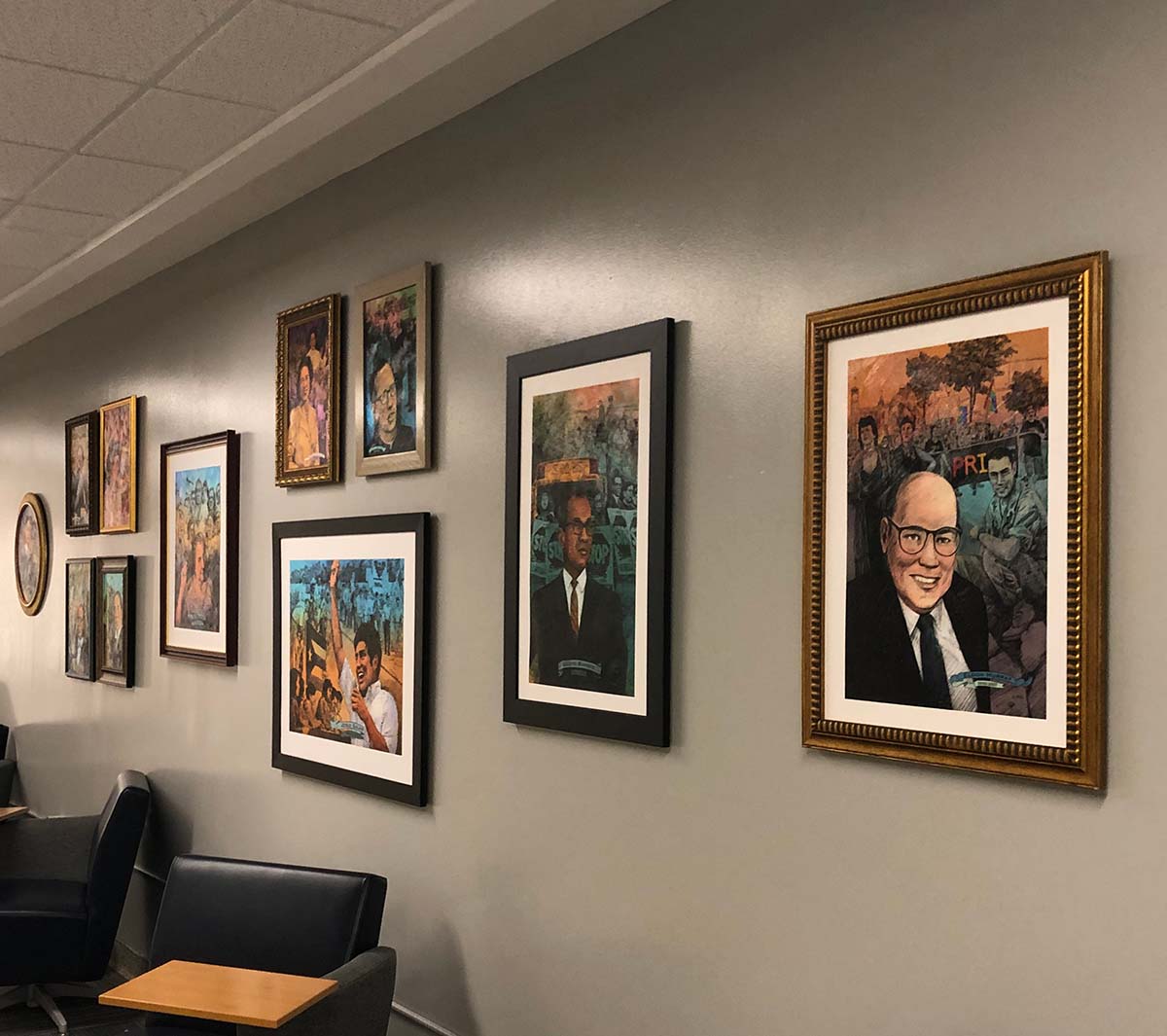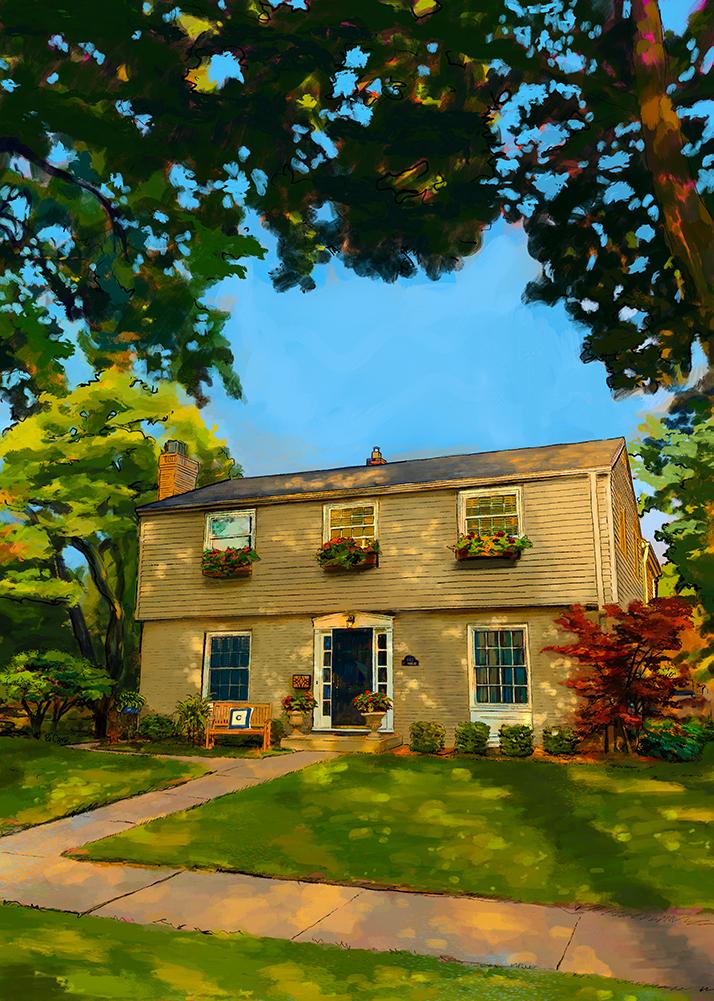Fighting for freedom and voting rights
Ezekiel Gillespie is the focus of this week's work on the MATC project, "Portrait of Milwaukee Progress". I chose to include Mr Gillespie as his life was particularly extraordinary. Though born to slavery, he fought his whole life for what he knew was right for himself and for his community, taking the fight for Black Suffrage all the way to the Wisconsin Supreme Court. I was only able to find a couple existing images of Mr Gillespie - the one I chose to inspire this portrait showed particular strength in his posture, and I changed the direction of his gaze to peer directly and unflinchingly at the viewer. Directly behind the portrait I inserted a grouping of African-American soldiers of the Civil War, looking worn but powerful. These men fought for the America of Abraham Lincoln's vision, which included the right for African-American men to vote. (The Women's Suffrage movement was to come later). Behind the soldiers is depicted a voting day scene - men of color standing in line, casting votes for the first time. This was a momentous day. This work is still in draft status, but the sketch is starting to come together. I will be adding more drama to the darks and lights and the colorization is likely to change somewhat as well.
Ezekiel Gillespie, 1818-1892
Ezekiel Gillespie was an African-American civil rights leader who won a landmark case securing voting rights for African-American men in Wisconsin. Gillespie was born a slave in Mississippi (or Tennessee), probably the son of an African-American slave and her white slave owner. As a young man he purchased his own freedom for $800. He traveled to Indiana, and soon moved to Milwaukee, Wisconsin, where he found success selling groceries at the corner of Mason and Main, and then worked as a railroad porter. He quickly became a leader in the African-American community, an activist fighting for equal rights. He operated a local branch of the Underground Railroad and facilitated the founding of Wisconsin’s first African-American church. In 1865, Gillespie attempted to vote. He was denied a ballot, so he sued the Board of Elections. Gillespie v. Palmer went all the way to the Wisconsin Supreme Court. The justices of the court sided with Gillespie, in his argument that Wisconsin voters had voted in favor of male African American suffrage in an 1849 referendum. He was the first African-American voter in Wisconsin.
For more information:





